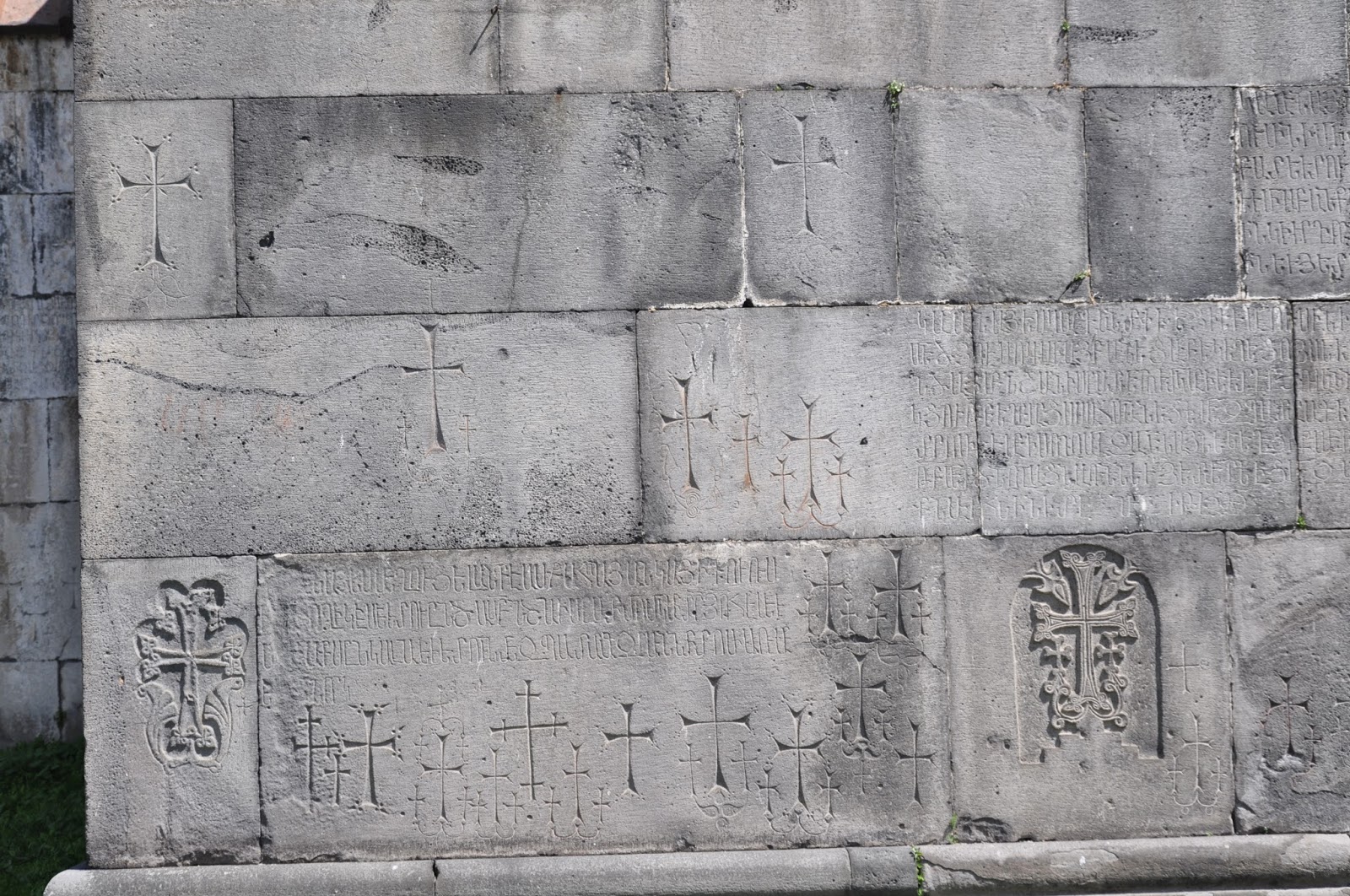Seen from the outside the Haghpat Monastery didn't seem to be so majestic as when we visited it. Placed on the UNESCO's world heritage list because of representing the highest flourishing of Armenian religious architecture developed from a blending of elements of Byzantine ecclesiastical architecture and the traditional one of the Caucasian region, it is said to have been built on a site chosen to afford protection and concealment.
The exact date of its foundation is unknown though documentary evidence suggests it dates back to the middle of the 10th century.
When we walked up the entrance to the first structure, St. Gregory's church (1005) some young ladies were walking along one of its walls, holding themselves onto the lateral façade so as not to fall, apparently in a traditional love venturing vow.
Several structures have been added to the initial ensemble in different epochs, whose largest church, the church of the Holy Cross, was built in 976-991.
In the interior of its apse a fresco depicted Christ Pantocrator and despite being faded it was still impressive, more impressive still was the fact that apart from one or two minor restorations said to have been carried out in the eleven and the twelfth centuries the church has retained its initial character.
The local priest showed up to greet us and was naturally impressed with the youngest visitor of our group, whom he gently offered some Easter treat he further extended to the rest of the group.

Walking around the various church galleries was like walking on history and an inevitable atmosphere of humility settled in. Wherever we looked, despite being hard to keep and capture every detail and all that was being said there was something to remember lately.
Khatchkars in Haghpat are said to have been built not only as memorials but installed to mark several events or perpetuate philanthropic activities of persons, whose names were then inscribed on them, such being the case of the Amenaprkitch khatchkar.
Dating back to 1273 and considered among some of the outstanding works of Armenian Art, it is located in the passage leading to the library and did stand out for the number of realistically depicted human figures fitted in that unique decor, showing Christ crucified surrounded by saints and apostles with angels looking down and God the father raising his hand in blessing. I couldn't help photographing it from almost every possible angle.

Some additional details did catch my attention particularly the fancy shape of the cupolas and their combination with high arches, as well as the high relief sculptural group of Smbat and Kyurike kings with a model of the temple in their hands, though some of the "modest decoration did simultaneously appeal to me.
The 1245 bell tower and the 1257 Hamazaspat building were the last structures to be seen.

(To be continued)












































No comments:
Post a Comment